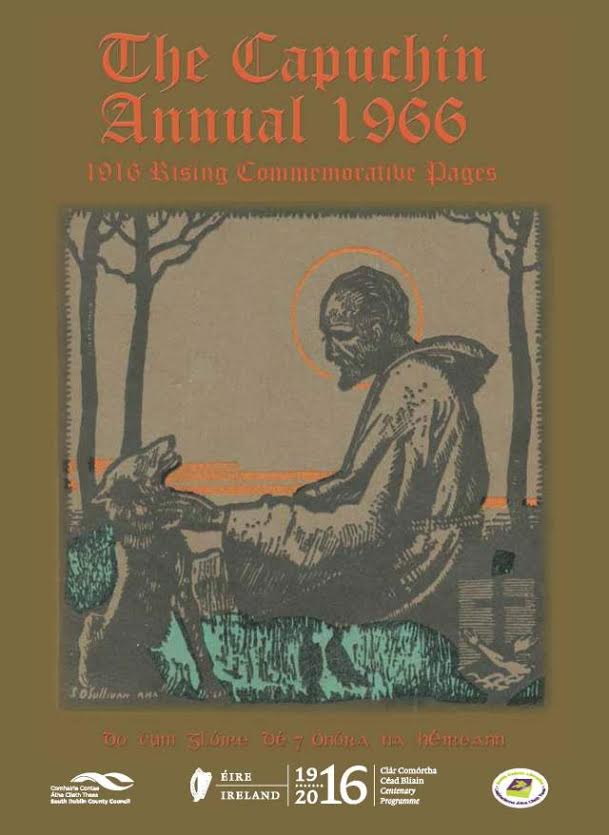Research on Bram Stoker’s family tree offers new insights into how he created the vampire Count Dracula.
13 April 2016“I myself am of an old family…” Count Dracula to Jonathan Harker. Count Dracula is one of the most terrifying figures in popular culture. He first appeared in print in 1897, as the title character in Bram Stoker’s book. Since then the name ‘Dracula’ has become shorthand for all vampires....

Origins of the Stoker family
13 April 2016Bram Stoker was descended from a protestant Dublin artisan family of humble origins. Between the 1780s and 1840s, over two generations the Stokers pulled themselves up by their boot-straps, to establish themselves as professional middle-class. View Bram Stoker’s family tree. The earliest proven Stoker ancestor that we can document is Bram’s grandfather,...

Thumbnail Character sketches
13 April 2016Richard Stoker Although there is strong circumstantial evidence that Richard Stoker was father of William Coates Stoker (and so Bram’s great-grandfather), we cannot find clear proof. We know that between 1772 and 1775 Richard Stoker was a corporal in the 2ndRegiment of Horse. In later records of the 1770s Richard...

Abraham Stoker
13 April 2016In the first half of the 1840s Abraham Stoker met Charlotte Maria Blake Thornley, daughter of Captain Thomas Thornley, a retired officer of the 43rd Foot Regiment, and retired police-officer. Charlotte Blake Thornley was half Abraham Stoker’s age. They married in January 1844, and made a home at 15 Marino Crescent,...

Stoking Bram’s imagination – stories from Irish history
13 April 2016Bram Stoker was a sickly child, he saw more of his mother than any of his other siblings. She liked to entertain him with stories drawn from her early life in Sligo and Donegal, and from her own family history of the Blakes and O’Donnells. View the Blake family tree. Blakes...

Conclusion
13 April 2016What is new about our research? And how does it impact on Stoker’s ‘Dracula’? The research completed by Fiona Fitzsimons, Helen Moss and Jennifer Doyle is new research, and is directly relevant to Stoker’s ‘Dracula’. The key aspect of our story, is that the O’Donnells were not simply “a landed...

Rickard Donovan’s Role in Combined Operations
13 April 20164a. 1940 to D-Day: At the outbreak of WWII Rickard rejoined the Armed Forces, and was assigned to Combined Operations in its first incarnation under Roger Keyes who served as Director between July 1940 and October 1941. Combined Operations drew on the best practices and expertise available within the Royal...

Behind the Scenes in the Genealogy Advisory Service: Fiona Fitzsimons
12 April 2016The fun of the genealogy service in the National Library is that we never know in advance who we’ll meet, or what stories we’ll hear. Our job is to listen, to identify verifiable facts and events, and to guide enquirers in their research. The search never ends, because family history...

South Dublin Libraries 1966 Capuchin Annual Reprint
12 April 2016South Dublin Libraries, by kind permission of the Capuchin Franciscan Order and with the generous assistance of Eneclann, are proud to present a reprint of the 1916 commemorative pages of the 1966 Capuchin Annual as part of South Dublin County Council’s Decade of Centenaries programme 1913-1923. The Capuchin Annual...

Gaelic Capital and Norman Stronghold – Ferns and the transformation of Ireland
12 April 2016Archaeologists and historians from Ireland and Scotland, all experts in their individual fields, will deliver papers on topics ranging from Gaelic royal landscapes to Anglo Norman settlement and William Marshal, the greatest knight in Christendom. Speakers will include Dr. Edel Bhreathnach, CEO, The Discovery Programme; Gerard Dowling, also of The...

The life and times of Mary Pauline Russell Cruise
11 April 2016On 20th September 1858 in the RC Cathedral in Detroit, Mary Pauline, youngest daughter of the late Patrick Russell Cruise, married Dillon Henry Mapother, of Louisville Kentucky. A notice of their marriage in the Freeman’s Journal stated that Dillon H. Mapother was the second son of the late Henry Mapother Esq. of Annadale...

Origins of The Mapother Family
11 April 2016The Mapother family’s deep roots were in Dorset in south-west England. The first reference to the family in Ireland, is in 1588 to Richard Mapother Sheriff of Roscommon.[1] By the early 1600s the Mapothers received a grant of lands in county Roscommon, and established their main residence in Kilteevan, where they...
